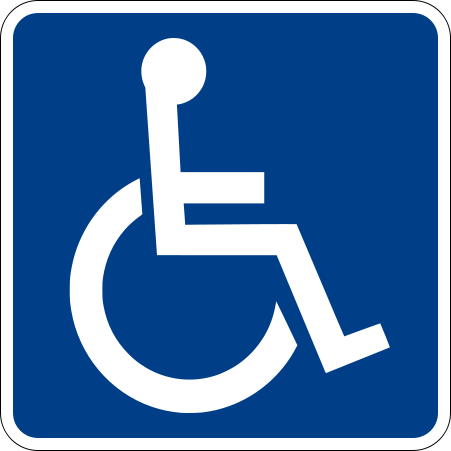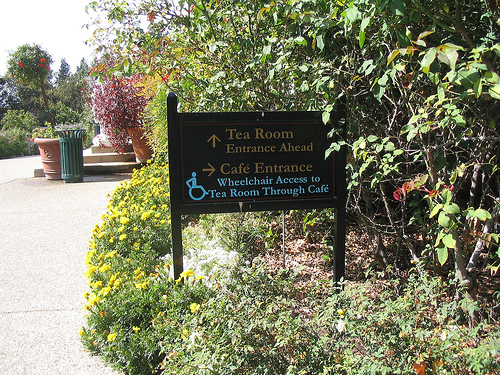Re-posted in honor of Love Your Body Day.
This symbol is the international symbol for persons with disabilities:

It looks pretty straightforward. Descriptive even.
But check out this symbol that I saw at a T.J. Maxx in California:

Notice how the second symbol represents people with disabilities as active and independent. There are motion signs and the figure is pushing its own chair.
The comparison reveals how much the first represents them as passive and helpless.
UPDATE! In the comments thread, Penny added a link to the symbol they use at the Huntington Library (Pasadena, CA):

For more posts on symbology, see our posts on traffic lights with female figures, stick figures and stick figures who parent, and default avatars.
Lisa Wade, PhD is an Associate Professor at Tulane University. She is the author of American Hookup, a book about college sexual culture; a textbook about gender; and a forthcoming introductory text: Terrible Magnificent Sociology. You can follow her on Twitter and Instagram.








